New Delhi/Hisar/Sonepat: Officially, Ajit Singh died in a road accident 8km from his village in Haryana’s Rohtak district at 7 am on April 1, 2018. It’s what his wife, Satwanti, who claimed to be present on the spot, reported at the Hisar Sadar police station. His nephew, Sachin Dhull, explained the chain of events in his statement to the police: “My uncle, Ajit, and my aunt, Satwanti, had gone to the village Dabra to check out a buffalo for purchase. [While they were out] I was informed that a car hit my uncle causing an accident. Driving carelessly and at high speed, the driver of the [Hyundai] i-20 car (no: HR 31M 7380) hit my uncle from behind. He died due to the injuries from the accident. I have identified the dead body [at Civil Hospital, Hisar]…. I request the police to find the name and address of the driver and initiate legal action.”
On April 2, a report on the front page of the newspaper Hisar Kesari laid out more details. “Ajit had climbed down from a bus and had barely taken a few steps when an unidentified vehicle hit him. Ajit dropped down unconscious. The driver fled the scene. Ajit was taken, with the help of people present on the spot, to the hospital where he was declared brought dead. The body has been handed over to his family after a post-mortem examination.”
At 10.48 am, the officer in-charge at Hisar Sadar station registered an FIR by Satwanti, and charged the unidentified driver under Sections 279 (rash driving) and 304-A (death by negligence) of the Indian Penal Code. Five people known to the deceased identified his body at the mortuary, including his wife, older brother, and nephew. “The body is lying on the stretcher. There is fresh blood on nose and mouth. The chest seems sunk on the right side,” read the panchnama or police’s record of observations.
The post-mortem examination conducted at 12 pm noted “clotted blood in both nostrils and mouth”, “blue-colour bruise of approximately 10 x 15 cm over right side of chest, multiple rib fractures, laceration of lung tissue” and “multiple abrasions over both foot, elbow, face and forehead”.
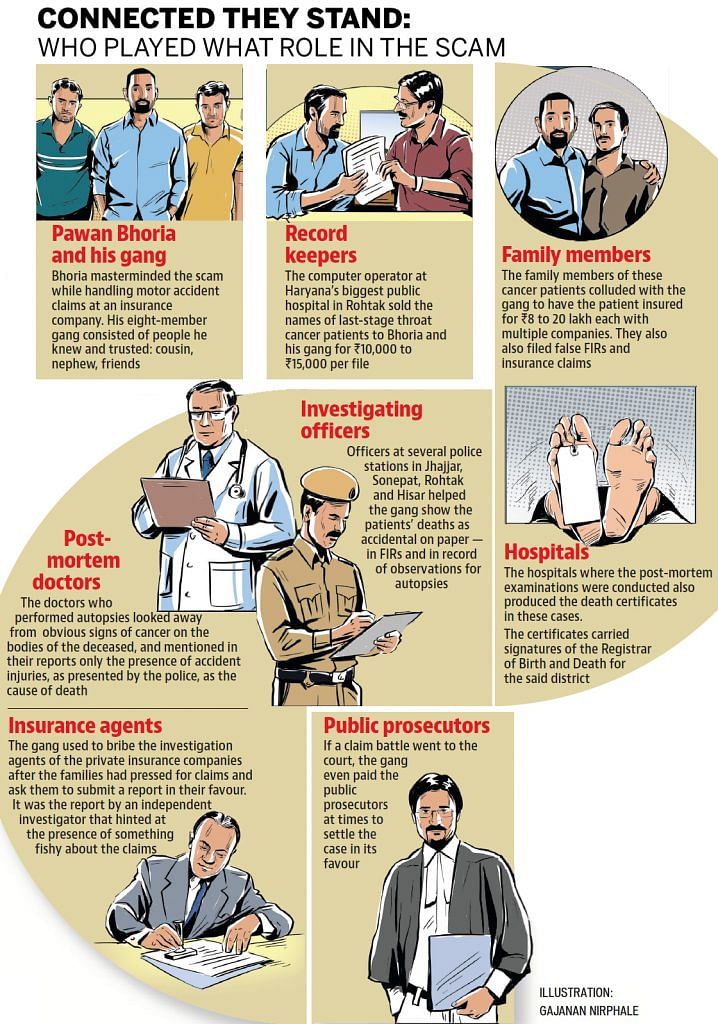
Signed by the resident medical officer at Civil Hospital, Hisar, the post-mortem report put down the cause of death as “injury to vital organs…sufficient to cause death in ordinary course of life”.
That settled the matter. Ajit’s wife and relatives went home. The police moved on. At least 150,000 people are killed in road accidents in India every year. Ajit happened to be just another one — an ordinary end to an ordinary life. Back home, his wife informally married his older brother, Naseeb, in a common turn of event in parts of rural Haryana. They expected no big changes to their life. Except one.
Days before he was killed, Ajit had signed up for personal accident insurance policy with at least four companies, at an average premium of Rs 5,000. An “accidental death” would entitle his nominee to at least Rs 25 lakh from one. In July 2018, Satwanti sent a letter to the ‘claims’ department of Bajaj Allianz. “I am informing you with deep regret that my husband Ajit has died in a road accident. I have attached all documents related to his death. Please initiate the process of compensation.”
Concrete doubt
Sometime between 2017 and 2018, many insurance agencies operating in Haryana began to suspect a trend.
During that period, Bharti AXA General Insurance received a stream of Personal Accidental Claims from Haryana. There was a strange commonality to them. “The nominee’s bank account was opened just one or two months prior to buying Bharti AXA General Insurance policies. The PAN (Permanent Account Number) card of nominees was also issued just a couple of months before. Interestingly, we found all the insured were farmers and they had never taken any personal accidental policies in past,” said Aman Bedi, associate vice-president, Fraud & Investigation Unit, Bharti AXA. This wasn’t all.
“As per medical documents, we observed that all insured died due to head injuries and they were brought dead to the hospital. While scrutinising these cases, we also found three common mobile numbers,” Bedi said. Similar concerns were coming up at Bajaj Allianz. It was receiving “a lot” of cases from “Rohtak and Sonepat” of personal accidents in which the gap between buying of policy and pressing of claim was too close. It had also noticed in the police documents, the absence of eyewitnesses, photos of the accident spots, and injuries suffered by fellow passengers. Executives at Chola MS General Insurance had noticed that in four such claims received by the company in 2017-18 “the deceased were insured for Rs 10 lakh each, neither for a higher value, nor for a lower value; the victims were farmers by profession but purchased online policies using credit/ debit cards; and the policies were bought one month prior to the deaths”.
Mysteriously, in all the four cases, the victim was riding pillion on a motorbike whose driver lost balance because of the sudden emergence of an animal in front of the vehicle: buffalos in two cases, a bull in one, and an antelope in another.
The insurance firms were also noticing that the road accidents killing their clients were being reported at the same police stations in Sonepat, Jhajjar, Hisar and Panipat sometime in 2017, a private investigator (PI) in Haryana received “19 to 20” cases from “various insurance companies”.
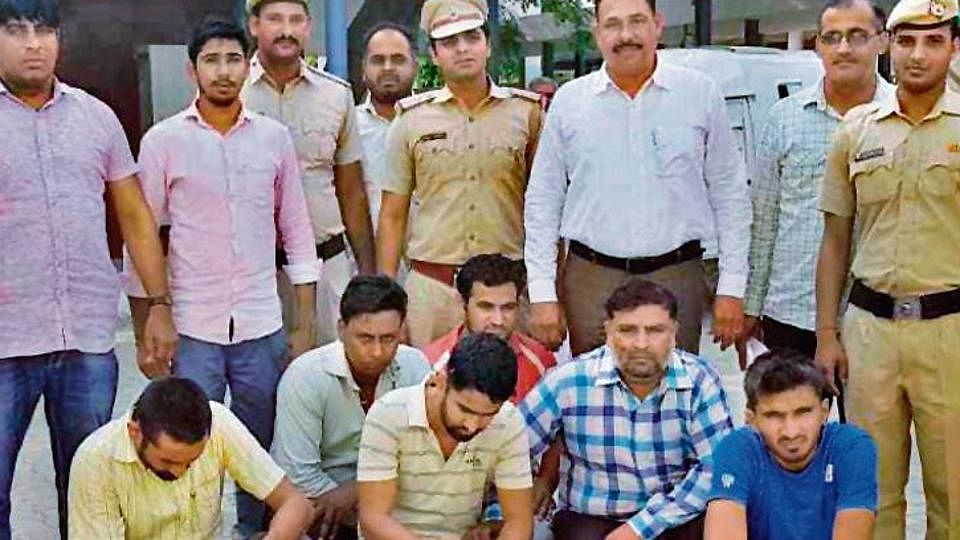
He reached out to the families, neighbours, doctors and police officers in each of these cases. No one was willing to talk, but he picked up some information. In 2018, he reported back to the insurance companies saying that he had “concrete doubt” that these deaths weren’t caused by road accidents.
These farmers had died of cancer. On April 5, 2019, Bharti AXA filed a complaint with the director general of police in Panchkula, after a year of internal investigations, alleging that a gang of conmen had defrauded the company of crores of rupees. Several other insurance companies followed with similar complaints. The case was handed over to the Special Task Force (STF) of Haryana Police. On April 20, after two weeks of investigation, STF arrested the mastermind of the scam and his two close aides from Sonepat.
Everything about the scam sounds strangely unreal. The Haryana-based gang allegedly identified terminal cancer patients from rural, low-income backgrounds, got them to insure themselves with multiple companies by hiding their condition, waited for them to die, and then put their dead bodies through “accidents”.
The gang kept a part of the insured sum, between Rs 8 and Rs 20 lakh in each case, and distributed the rest among its partners in crime: family members, police officers, record keepers, doctors, insurance agents, and public prosecutors. At least 100 people have been accused of being complicit in the scam that allegedly carried on for two years, executed nearly a 100 cases, and cheated more than 25 insurance companies of over Rs 100 crore, according to STF.
Also read: Rs 13 crore GST fraud busted after UP cops & sales tax dept’s joint raid in Lucknow & Noida
Hit and run
In Bhagwatipur village, everyone remembers Ajit Singh, but few are willing to talk about the circumstances of his death. Except for Balwan Dhull, his longtime neighbour who treated him like a younger brother. “He was diagnosed with cancer two or three years before his death. His treatment was going on in PGIMS (Post Graduate Institute of Medical Science, Rohtak),” said Dhull between long drags on his hookah. He said he saw Singh shortly before the latter took his last breath.
“At four in the morning, I went to see him. He was feeling uneasy. He asked me to place his cot out under the sky. When I went back at 6 am, he was lying dead. His wife was there.” Then, Dhull said, the “insurancewale” showed up. “They took away his body.unka accident dikha diya [they showed his death as an accident].” Dhull saw the dead body again after a few hours. “We were called to the mortuary to identify it. [This time] his body had injuries from head to chest.” Like most people close to Ajit Singh, Balwan Dhull knew what was going on. “Paise bana rahe the [they were making money off it].”
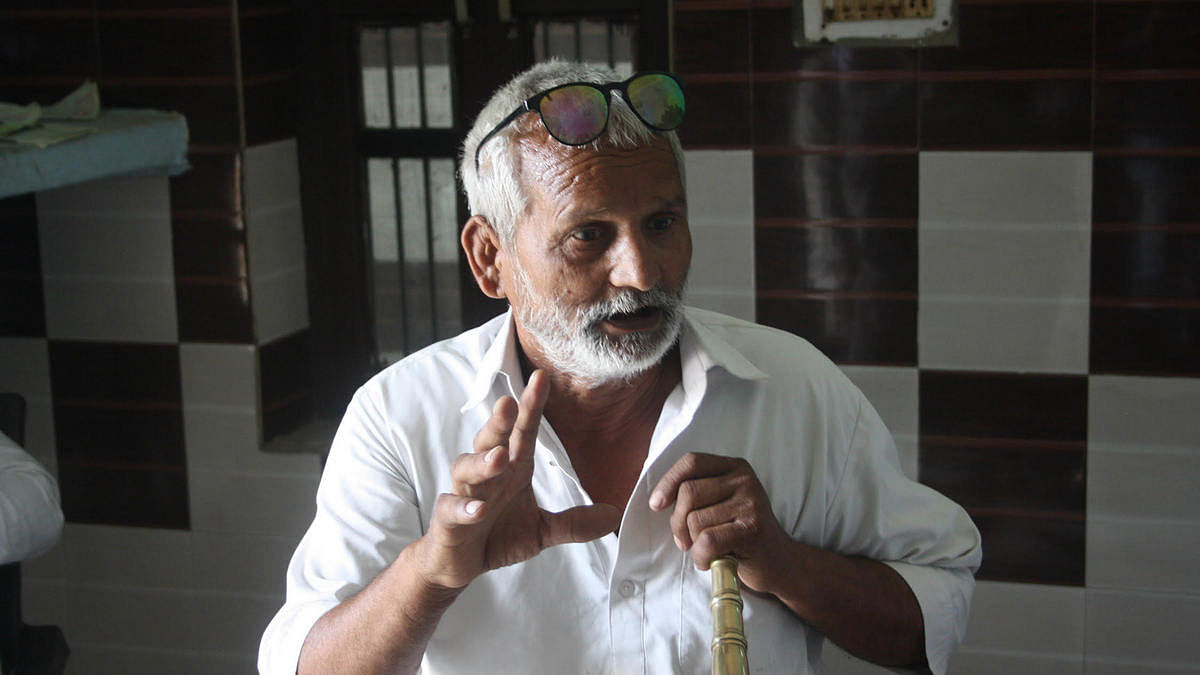
Very little is known yet about the mastermind of the scam. Pawan Kumar Bhoria, 42, was born in Sevali village in Haryana’s Sonepat district. At the time of his arrest, he was living in a rented apartment in a housing society in Kundli on the Delhiharyana border with his wife and two children. After graduating from a Sonepat college and an unfinished course in law from Meerut University, he began to work for insurance agencies.
Between 2005 and 2015, he worked in three insurance companies, starting as an agent and moving on to handling cases that went to MACT (motor accident claims tribunal). It was while working at Reliance General Insurance, where he spent eight years, that he got the idea for the scam. “It was a unique strategy, and no one had ever thought of turning deaths into accidents,” he explained to STF.
Currently he and his seven-member gang — cousins, nephews, friends — are facing charges under section 201 (destruction of evidence), 205 (false personation for purpose of act or proceeding in suit or prosecution), 34 (common intention), 420 (fraud), 464 (making a false document), 465 (forgery), 468 (forgery for purpose of cheating), and 471 (using forged document) of the Indian Penal Code at Civil Lines police station in Sonepat.
Bhoria began the scam in 2015 by contacting the computer operator of the cancer ward of the state’s largest public hospital and buying from him the details of patients going through the last stage of throat cancer. “The gang paid between Rs 10,000 and Rs 15,000 per file to the operator at PGIMS, Rohtak,” said director general of police Satheesh Balan.
The computer operator at PGIMS was arrested on April 21. The institute has expressed “shock” at learning that “someone from PGIMS was also involved.” Dr Varun Arora, public relations officer at PGIMS, said the institute has launched an internal inquiry. “We treat more than a lakh patients per year, and their records are stored across different wards based on the category of ailment.”
Armed with the names and addresses of the terminal patients, Bhoria and his gang went to their homes and proposed a lucrative deal. In most of the cases, it was middle-aged men who were about to die of cancer. Bhoria and his aides reminded the family of what they were set to lose with the death of the main working member of the family, and what they could gain if they played their part in the scheme.
They wouldn’t have to do much, the gang told the families. Their bank accounts would be opened, the minimum amount put in, their PAN card applications would be submitted, insurance forms filled, even premiums provided for. STF’S investigations into the four cases brought up by Chola MS revealed that “all the insurance policies were purchased through the same IP address, even though the deceased belonged to different districts”. All the family had to do was to say as they were told and to sign, or mark their thumb impressions at the appropriate places.
“In many cases, the family members turned down our offers. We used to target at least 50 patients a month out of which only 10 agreed to get insured,” Bhoria told STF. As part of this deal, the patient and their family also permitted Bhoria and his gang to seize control of the dead body and “kill” it in an accident.
The most commonly enacted accident was a hit-and-run. “When the patient would die, they would take the body to a spot and crush it with a vehicle to pass it off as an accident,” said KK Rao, inspector general of police in the STF. On April 24, STF arrested Sumit Kumar, the son of a cancer victim who died in December 2018, for filing a false FIR for accidental death of his father. He had filed claims with various insurance companies aggregating to a sum of Rs 1 crore. He received Rs 2 lakh from the scamsters, according to STF. The police recovered the cash from his house in Ballah village in Karnal district.
At times, it was the same car hitting “walking” or “bike-borne” persons in different districts and running away from the spot. “The death of Dharamvir Singh on 11.4.2019 who was from village Kansala and suffered from cancer was shown as being caused by an accident. The car that is supposed to have hit him (HR 11 LL 4100 I-20) belongs to Mohit [accomplice of Pavan Bhoria].
In an earlier claim [received by Bharti AXA], the accidental death of Sandeep from Uttam Vihar, Rohtak, on 25.11.18. also involved the same car,” noted the FIR. “The dead bodies were carried to the ‘dead house’ even before the police was informed.”
The FIR also makes the crucial point that “the investigating officer in both the cases was the head constable Balbir Singh of Civil Lines station, Sonepat”.
Occasionally, the terminal patients died a second time from “electrocution”.
“This morning at 5.30 am my husband Lilaram plugged in a heating rod to warm water for his bath. When I came back from the fields after feeding our cattle, he was lying face down on the bathroom floor. My relatives took his body to Civil Hospital in Jhajjar where he was declared brought dead. My husband died from electric current,” wrote Babli from Ahri village in Jhajjar district in her statement to the police on September 25, 2017.
She repeated this account in her letter of claim to Bharti AXA, emphasising that “my husband had no previous illness” and “his death has left me in charge of our two children”.
As attachments, she provided a joint statement by her neighbours and relatives confirming that “Lilaram’s death happened from electric current” and that he “had no previous illness”, a report from Civil Hospital, Jhajjar, noting his “abrasions and blisters”, and police inquest papers showing “death due to electrocution”.
Lilaram had suffered from the last stage of throat cancer, according to a copy of his case file in Radiation Centre of PGIMS, Rohtak. While the computer operator had either sold or destroyed the original records, some copies remained in certain departments where the treatment was going on.
They were found by the officers of STF when they went to the PGIMS for a raid. The 40-year-old farmer didn’t die of electric current. As KK Rao put it, “None of the eight patients whose investigation was conducted by the police had met with an accident or suffered external injuries.”
The missing mandible
After the dead bodies of the cancer patients were given injuries through accidents, STF officers said the insurance conmen informed the police officers with whom they had already struck a deal. Bhoria had cultivated his contacts in Haryana Police through a head constable, Ashok Kumar, 30, at Kundli police station in Sonepat who happened to be an old friend of his. “In 2015, Bhoria contacted Ashok and discussed his plan and asked for help. Ashok used to contact the IOS (investigation offcers) and convince them to join hands with Bhoria,” said IGP Satheesh Balan of STF. Ashok Kumar was arrested on April 29.
“They offered Rs 1 lakh to each investigating police officer,” said Balan. Their role was to transfer the version of their death by accident to paper – from FIR to witness statements to record of observations submitted for post-mortem examination. The post-mortem examiners were paid too, said Balan, for mapping the police’s observations of the accident on to the medical assessment of the bodies. “They offered Rs 1.75 lakh to the doctor who conducted the post-mortem examination,” he said.
None of the doctors who conducted the postmortem examination in the eight cases brought up by Bharti AXA and investigated by STF used the C word. “There are external changes in the patients of throat cancer because they go through mandatory radiotherapy,” said Dr Niranjan Naik, cancer specialist at the Fortis Memorial Research Institute. “There is visible thickening and discolouration of the skin on their face and neck,” he said. The suspicion of throat cancer wasn’t signalled even in the case where a part of the jaw was missing in the dead body brought for postmortem examination at PGIMS, Rohtak.
Ramshreshth Sahni, 38, of Ajmer Basti in Jind district died on July 4, 2017 in a road accident at 10.30 pm according to the FIR lodged at Hisar Sadar station. On June 9, 2017 the farm worker had bought a “premium personal guard policy” from Bajaj Allianz with an insured sum of Rs 25 lakh. His body was taken to the PGIMS.
“The [post-mortem] report said that ‘a skin defect of size 8 x 6 cm is present on the left Anterolateral aspect of Neck, a linear old healed scar is also visible, and a portion of the Jaw bone is missing at the left angle of Mandible’,” said Sanjiv Dwivedi, who heads the Investigation and Loss Mitigation at Bajaj Allianz. Suspicious, he and his team went to the PGIMS asking if the hospital has any previous treatment records for Sahni. “The hospital refused to share them with us.”
Upon filing a Right To Information (RTI) application for procurement of the deceased’s health-related documents, “the hospital denied the request mentioning the confidentiality of the document,” he said. “When we approached the post-mortem department of the hospital with queries related to the missing mandible and the scar, the doctors refused to entertain us.” The police was no more forthcoming.
“Our team visited the Rohtak police station multiple times to get details of the accident but no one provided any details. They told us it was a hit-and-run case by an unknown vehicle. There was no eyewitness in the case. The accident details were missing and a body part was also missing,” Dwivedi said. Dwivedi and his colleagues went to Sahni’s village to ask around.
His landlord had a different story to tell. “Ramshreshth Sahni from Bihar was my tenant for 10 years. He died in July 2017 in the course of his treatment for cancer at PGIMS,” Rishipal wrote in a statement made to Bajaj Allianz. At the local Anganwadi centre, the team found in death records of village residents the “cause” for Ramshreshth Sahni’s demise: cancer. His wife, Renu Sahni, said she wasn’t aware that his death was shown as accidental. She said it was an insurance agent who had dealt with the documents.
“We have arrested people who had major stakes, and others will be arrested soon. We are focusing on the doctors who are involved in multiple post-mortems and the policemen who were involved in more than one case,” said Haryana’s director general of police (DGP), Manoj Yadava. STF is currently looking into the suspected participation of 12 police officers and 10 government doctors in the scam.
On April 21, STF arrested the computer operator at Civil Hospital, Sonepat, Pramod Kumar, for enabling the collusion between the conmen and the doctors who conducted the post-mortem examinations. On April 30, Ambuj Jain, a doctor at the same hospital who had conducted the postmortem examinations in some of the cases under investigation, moved a petition for anticipatory bail. Ashwani Kumar, principal medical officer, refuted all allegations concerning Civil Hospital, Sonepat.
“The main culprits are the police and the family members. They should be arrested in this case, not the doctors. If an accident case is brought to the doctor for post-mortem examination, he will have to conduct it. A doctor’s job is to check the injuries causing death and submit the report based on the injuries found on the body,” he said, adding that if the police arrested a single doctor, all of them would go on a strike.
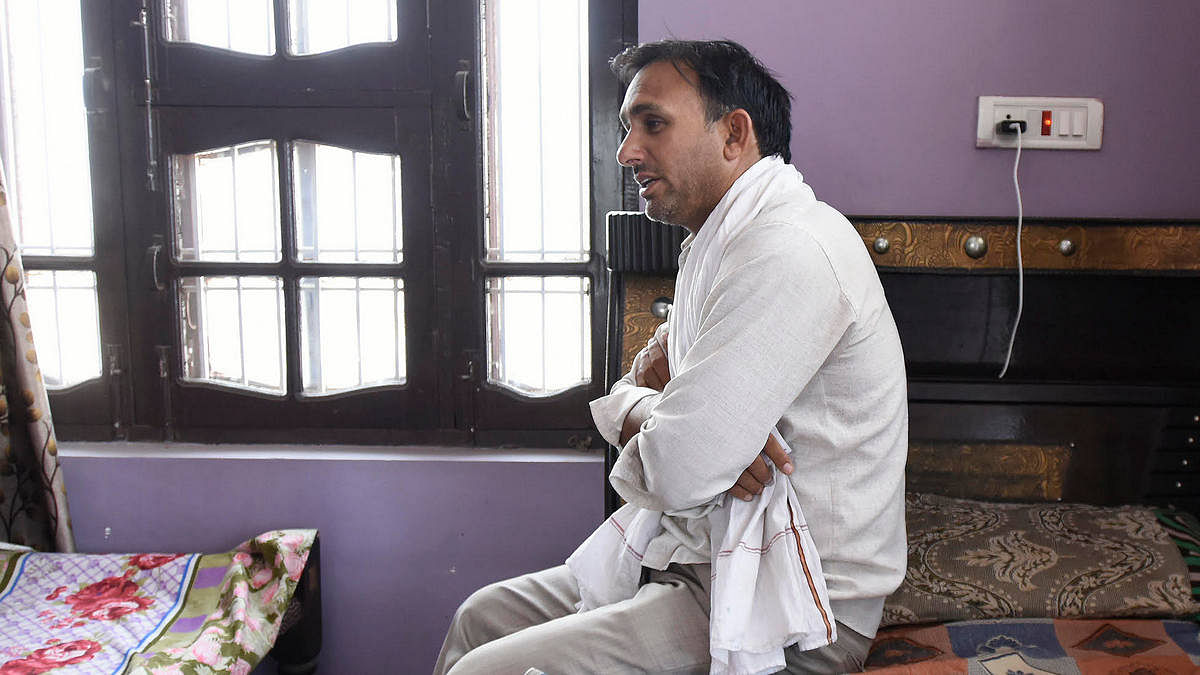
However, STF officers said they have enough substance to frame charges against doctors who worked in collusion with the gang. “There are call records, witnesses and statements which prove them guilty,” said Balan. After receiving the complaint from Aman Bedi of Bharti AXA, STF began to tap phone calls between members of the gang.
“The complainant had provided the mobile numbers of the suspects and we started intercepting three mobile numbers,” said KK Rao. The conversations noted in the FIR demonstrate the coordination between various players in the scam:
■ “In code word, Mohit is talking about a case in which someone’s throat is getting worse and his PAN card needs to be applied for.”
■ “Pawan is talking to Padam, saying that policy is done with PNB, Reliance, SBI and LIC. He says ICICI, HDFC and Birla are left to do.”
■ “They are talking about a police officer asking for an additional Rs 20,000. They are saying they have settled the payment with the hospital.”
Aware of the inquiries being made about them, Bhoria is also heard as telling one of his colleagues that “we will put in Rs 2 crore and have the DSP transferred”.
As investigations proceed, more people appear to be involved in the scam than what was originally suspected. “If any case gets stuck, they used to bribe the investigation agent of the private insurance company and ask him to submit a report in their favour. If any claim went to the court, they paid the public prosecutor,” said Balan.
“If anyone has submitted the positive report for any such a fraud case, we will support the police and will demand stringent punishment,” said Dwivedi of Bajaj Allianz.
“This is a big case, but we will make sure no one walks away,” said DGP Yadava.
Minimum Gains
It was an ingenious scam, but also one that relied on the easy corruptibility of people in charge of the lives and deaths of poor and illiterate villagers. In fact, it began with bringing them on board. Not all conspiring families have ended up richer. Some of them claim not to know what they did was illegal.
“My nephew did as he was told by Pawan, which was to call him up after the death of his father and to bring his body to Sonepat Civil Hospital where he had already managed to show it as an accidental death in collaboration with the doctor and the police,” said Mukesh Mann, a 43-year-old farmer in Ballah village. His nephew, a student at the local Industrial Training Institute, was arrested by STF for filing a false FIR about the death of his father.
Sachin Dhull,26, nephew of Ajit Singh from Bhagwatipur and prime witness of his death by accident, says his uncle died of cancer. “The insurance agent had asked me to inform him after his death so we called him on April 1, 2018. They asked us to come to Civil Hospital, Hisar, as they had to get the post-mortem examination done for the insurance claim,” he said.
Sachin said he signed the documents because he was told they were needed to complete the legal formalities to initiate the insurance claim. He didn’t read any of them before signing. He said it was the insurance agents who presented his uncle’s death as accident-related.
“It’s wrong if they are saying that I was involved in any kind of fraud as I don’t even have any cheque book or ATM card of any account. The account was opened by them,” he said. Sachin said he is currently unemployed and struggling to get by.
Ajit Singh’s wife, Satwanti, died in April. Balwan Dhull said she had been suffering from AIDS. Her account with YES bank in Rohtak has only Rs 11, 357 —just a little more than the minimum amount deposited at the time of its opening.
By special arrangement with ![]()



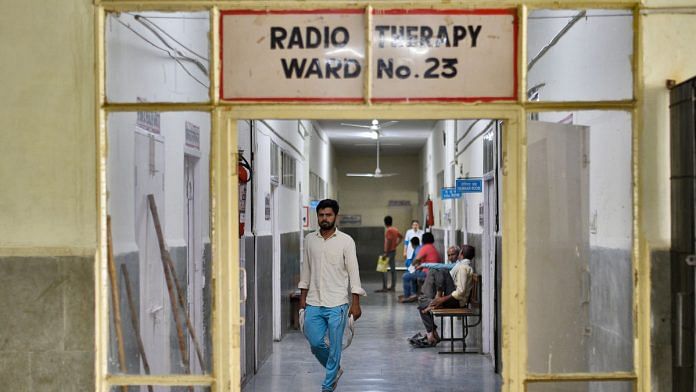



Complicated
Complicated scam
डॉक्टर और पुलिस को सख्त से सख्त सजा होनी चाहिए।